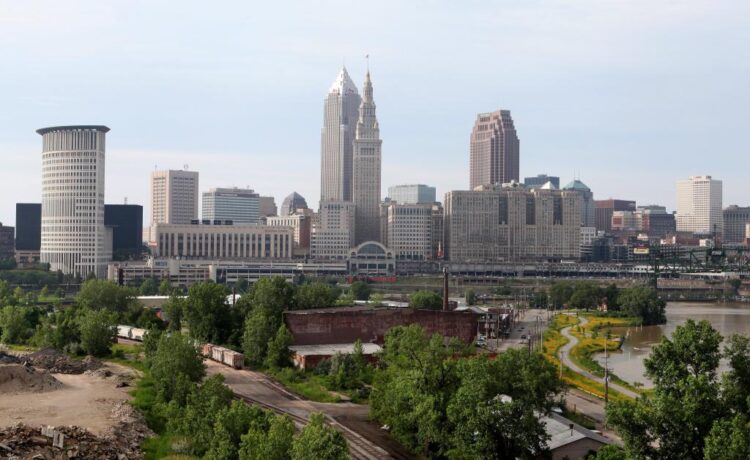The Cleveland Browns are asking for $1.2 billion in public funds to pay for a new estimated $2.4 billion stadium in Brook Park.
The Haslam Sports Group says it will ask for $422 million from Brook Park, $178 million from Cuyahoga County and $600 million from the state of Ohio.
The group then claimed the bonds would be paid back with a tax capture at the project site.
While the team claims the funds would be new money, economists who have studied professional sports stadiums have shown that money spent at a stadium and taxes collected are diverted spending from elsewhere in a state or region with the overall tax base not rising.
In this case, with the Browns currently playing in Cleveland, much of that would be diverted spending from the current site.
“NO! This is not ‘new tax revenue from the project,’” economist J.C. Bradbury wrote about the Browns’ claims. “This is reallocated existing tax revenue collected in different way.”
That means that $1.2 billion that had been going to the public entities as part of the tax base will now be sent to the Browns.
“It’s hard not to feel sorry of Jimmy Haslam,” Bradbury wrote on social media. “After all, he’s worth only $8.5 billion, largely due to the business he inherited from his father. Taxpayers really should chip in for a new luxury stadium.”
Bradbury has studied sports stadiums, their financing and impact across the country and recently sent a new paper on the topic titled “This one will be different, False promises and fiscal realities of publicly funded stadiums” for peer review after two years of writing.
He spoke on the topic to a Nashville committee before the city approved an estimated $3.1 billion tax capture around a new Tennessee Titans stadium.
Along with the tax capture, the Browns are asking for a new 1% bed tax for hotels and a rental car tax for all of Cuyahoga County.
Brook Park would use an admission tax, income tax and parking tax at the site toward its portion of the funding.
The city admissions tax would be raised from 3% to 6.5% under the proposal. The city would also collect income taxes from player and staff salaries that are currently paid to Cleveland.
“I think what is attractive to us is the vast majority of those monies, bed taxes and rental car fees, are going to be paid by people who do not live in Cuyahoga County,” Haslam said. “It would be unfair to say all of them, but the vast majority would be paid by people who do not live in the county.”
Bradbury and other economists have shown that the source of taxes sent to sports teams to build stadiums does not matter as the funding comes from the tax base and lowers the amount government has to spend on other items.
He also explained that hotel taxes are not just paid by visitors and they have an overall impact on hotel occupancy while the taxes at the stadium for parking and tickets to events are generally paid by locals.
“Most revenue generated by a hotel tax isn’t drawn by a sports venue,” Bradbury explained in a thread on hotel taxes. “Stadiums don’t host that many events, and most people in attendance are locals who don’t stay in hotels. Most of the visitor revenue is being paid by guests who aren’t there for the event.”
The Browns then claimed that the state would receive an increase in taxes due to the stadium and surrounding project that would amount to $3 billion in additional taxes over the 30 years of a new stadium lease.
That claim has been repeatedly debunked by economists, who have shown that similar claims consistently made when teams are looking for public funds for a stadium do not hold true when the stadium is built.
“The common justification that stadium-related spending results in increased economic activity is not well founded, because most fan spending derives from existing area residents who reallocate their spending from other local leisure consumption options,” a 2023 paper on the topic said. “Thus, spending at sports events crowds out other local spending and does not represent net new spending to the area.”














